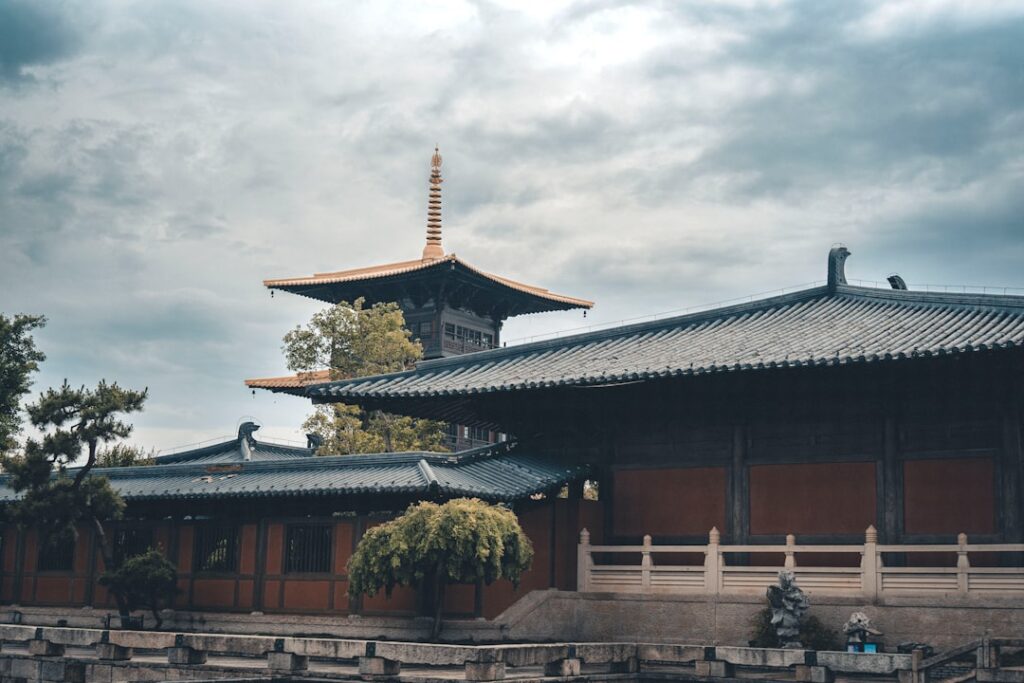Discover an extraordinary side of Kyoto that few travelers ever experience—a world far removed from conventional tourist paths. While sushi and ramen dominate global perceptions of Japanese cuisine, a quietly profound culinary tradition called Shōjin Ryōri continues to flourish in Kyoto’s ancient temples. Today, both curious foodies and seekers of mindful living are flocking to the city’s lesser-known monasteries and temple kitchens to immerse themselves in soulful, plant-based dining rooted in Buddhist philosophy. Join us on a journey beyond sushi, where mindful eating meets deep tradition, and unlock the secrets of Kyoto’s most exquisite and meaningful meals.
Kyoto’s Timeless Charm and the Rise of Shōjin Ryōri
With its lantern-lit alleys, vermilion gates, and tranquil gardens, Kyoto sits at the heart of Japan’s mesmerizing cultural landscape. Visitors are enchanted by centuries-old shrines, majestic bamboo groves, and the gentle cadence of geisha in Gion. Yet, hidden within this tapestry is a culinary renaissance quietly drawing global attention—Shōjin Ryōri, or Buddhist temple cuisine. Born from Zen monastic ideals, this sophisticated vegetarian fare is gaining popularity not only among the health-conscious and vegetarians, but also travelers craving meaningful, spiritual experiences. As mainstream gastronomy looks for sustainable, mindful dining, Shōjin Ryōri offers a rare invitation to taste authenticity and introspection amidst ancient stone walls and tatami mats.
The Origins and Essence of Shōjin Ryōri: Buddhist Wisdom on a Plate
Shōjin Ryōri traces back to the introduction of Buddhism to Japan over a millennium ago. Monks embraced a diet that abstained from meat, fish, strong spices, and pungent plants, aiming for purity in both body and mind. This cuisine is a celebration of impermanence and interconnectedness, focusing on freshness, seasonality, and the ethical use of ingredients.
Every meal becomes an act of mindfulness—from soaking kombu seaweed for dashi, to arranging mountain vegetables and tofu in delicate patterns. Kyoto’s iteration of Shōjin Ryōri is distinctive, favoring local heirloom vegetables like kyo-yasai and handmade yuba (tofu skin). Dishes such as sesame tofu, sansai (wild mountain greens), and vegetable tempura reflect both aesthetic simplicity and complex, layered flavors. Each bite embodies centuries of Buddhist wisdom, urging diners to savor with gratitude.
Kyoto’s Hidden Temples Offering Shōjin Ryōri: Local Secrets Revealed
Most visitors flock to famous temples like Kinkaku-ji or Nanzen-ji, but the city also shelters peaceful sanctuaries where temple cuisine awaits far from the crowds. For a transformative meal, head to the serene Shōre-in Temple in the Higashiyama hills, where the resident monks prepare multi-course Shōjin Ryōri beneath 800-year-old camphor trees. For another hidden gem, seek out Komyo-in, a sub-temple of Tofuku-ji, renowned among locals for its beautiful dry landscape garden and intimate dining experience.
Alternatively, Izusen in the Daitoku-ji complex delivers artful, season-driven platters in exquisite lacquerware. Menus change monthly, offering highlights such as yudōfu (hot tofu pot), goma-dōfu (sesame tofu), and pickled root vegetables. Reserve ahead and allow extra time for a stroll through lush temple grounds—the setting is as nourishing as the food itself.
Mindful Dining in Practice: Stories of Serenity and Sensory Awakening
Dining on Shōjin Ryōri is not merely about food—it’s an immersive ritual. Guests often begin with a moment of silent gratitude, followed by slow, deliberate tasting that engages all five senses. Tatami-floored dining rooms, the gentle shōji-filtered light, and the hush of garden sounds cultivate inner stillness.
Some temples now offer contemporary mindfulness workshops or meditation sessions alongside meals. On my visit to Ryōan-ji Temple, I was guided through a breathing exercise before tasting my first bite of sesame tofu. The subtle flavors intensified as I focused on texture and temperature—an extraordinary contrast to rushed modern eating habits. Visitors leave not just satiated, but quietly transformed, carrying a renewed appreciation for stillness wherever they go.
Conclusion: Ethical Travel Tips and How to Embrace Kyoto’s Mindful Culinary Scene
As Kyoto leads Japan in blending ancient wisdom with modern mindfulness, Shōjin Ryōri experiences shine as a testament to ethical, responsible travel. Visitors are encouraged to reserve temple meals in advance, respect quiet spaces, and minimize waste by finishing every bite. Sourcing locally and eating in season also reduces your environmental footprint.
Pack an open mind and a willingness to slow down. Whether you’re a vegan, spiritual seeker, or simply a curious traveler, Kyoto’s temple cuisine promises a deeply enriching journey—one spoonful at a time. Allow the hidden temples to guide your palate and spirit, and return home with memories as nourishing as the food itself.








